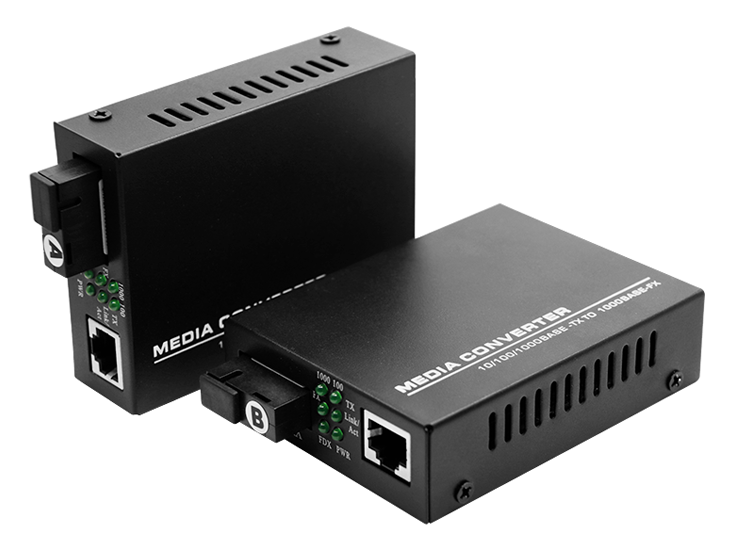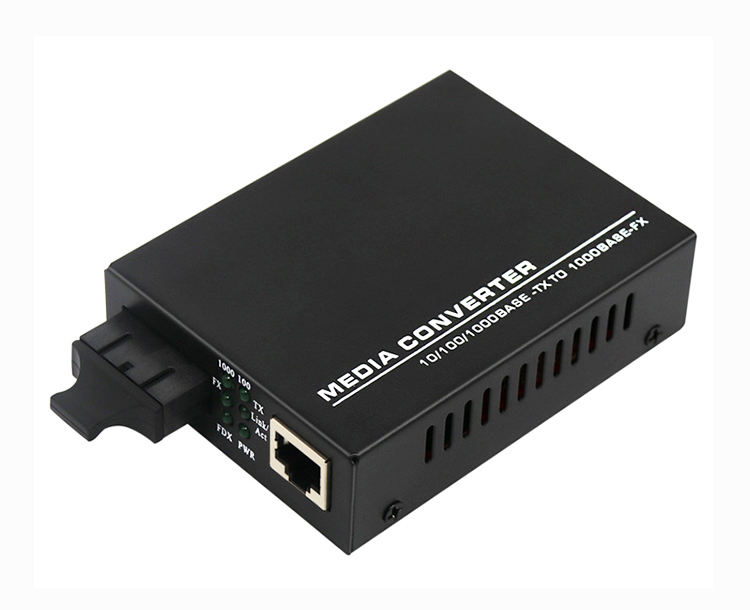Optical fiber transceiver is an Ethernet transmission media conversion unit that exchanges short-distance twisted pair electrical signals and long-distance optical signals. It is mainly divided into single-fiber optical transceivers and dual-fiber optical transceivers according to their needs Next, we will introduce in detail what is a single-mode single-fiber / dual-fiber optical transceiver? What are the differences between single-mode single-fiber and single-mode dual-fiber transceivers? Interested friends, let’s take a look!
What is a single-mode single-fiber optical transceiver?
Single-mode single-fiber optical fiber transceiver, single-fiber equipment can save half of the optical fiber, that is, data reception and transmission on one fiber.
Single-fiber optical fiber transceiver: The data received and transmitted is transmitted on one optical fiber. As the name implies, single-fiber equipment can save half of the optical fiber, that is, to receive and send data on one fiber, which is very suitable in places where fiber resources are tight. This kind of product uses the technology of wavelength division multiplexing, and the wavelengths used are mostly 1310nm and 1550nm. However, because there is no unified international standard for single-fiber transceiver products, products of different manufacturers may be incompatible when interconnected. In addition, due to the use of wavelength division multiplexing, single-fiber transceiver products generally have the characteristics of large signal attenuation. At present, most of the optical fiber transceivers on the market are dual-fiber products. Such products are relatively mature and stable, but require more optical fibers.
What is a single-mode dual-fiber optical transceiver?
Single-mode dual-fiber optical transceiver, single-fiber bidirectional optical transceiver type is photoelectric conversion equipment, the advantage is to save half of the optical fiber.
Single-fiber bidirectional optical fiber transceiver is a photoelectric conversion device that uses wavelength division multiplexing technology to transmit and receive data on a single optical fiber and convert network electrical signals and optical signals. Single-fiber bidirectional fiber optic transceivers have become popular in recent years. The advantage is that it can save half of the optical fiber, and the lack of half of the optical fiber is that there is currently no unified international standard. The products produced by various manufacturers are generally compatible and slightly less stable than dual-fiber products. At present, the fiber optic transceivers on the market are still dominated by dual-fiber products.
What is the difference between single-mode single-fiber and single-mode dual-fiber transceivers?
Single-mode multimode depends on the optical cable. Single-fiber dual-fiber refers to one-core optical fiber transmission or two-core optical fiber transmission; single-mode refers to using a single-mode optical fiber cable. Both are connected to this core, and the transceivers at both ends use different optical wavelengths, so they can transmit optical signals in one core. The dual-fiber transceiver uses two cores, one to send and one to receive, and one end is the sending end and the other end must be inserted into the receiving port, that is, the two ends must cross.
In specific applications, single-mode dual-mode, the amount of multi-mode is higher than single-mode, mainly in the wiring range of less than 500m, multi-mode can already meet, although the performance is not as good as single-mode. Single mode is used in the environment of more than 500m or high bandwidth requirements, mostly in large-scale venues such as enterprise-level applications. Because the working stability and performance of optical fiber modules are much better than transceivers, in single-mode application environments with high performance requirements, few companies will use transceivers, but directly use modules instead. There are fewer manufacturers of analog transceivers and higher prices.
The single fiber and dual fiber generally have two ports, and the two ports of the dual fiber are close to each other. They are marked TX, RX, one transmit and one receive, respectively. The two ports of the single fiber are generally P1. P2 indicates that both ports can be sent and received separately, that is, one port is used to send and receive, so it is called single fiber. The optical transceivers TX and RX represent receiving and sending. There are two types of optical transceivers: one is single-mode and one is dual-mode, just like highways may only be congested if there is only a single-line, but it is much smoother if it is a double-line, so it is obvious that the stability of the dual-mode receiver Good point.
Single fiber is just a single fiber connection between the two transceivers, dual fiber is more common, you need to use two fibers, the price of single fiber is slightly higher. The multi-mode transceiver receives multiple transmission modes, the transmission distance is relatively short, and the single-mode transceiver only receives a single mode; the transmission distance is relatively long. Although multi-mode is being eliminated, but because of the lower price, there are still many in use in monitoring and short-distance transmission. Multi-mode transceivers correspond to multi-mode optical fibers, single-mode and single-mode correspond, and cannot be mixed.








